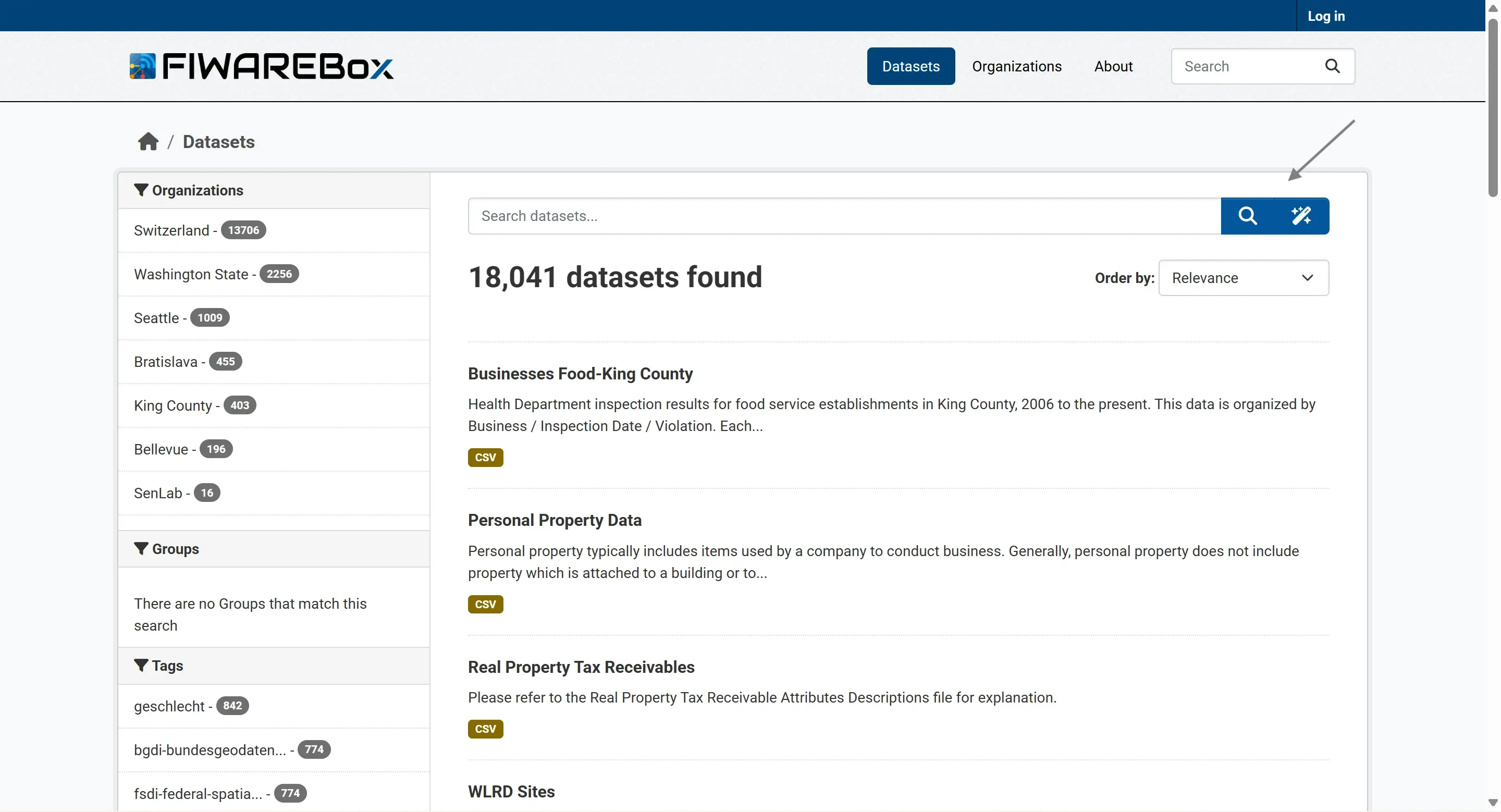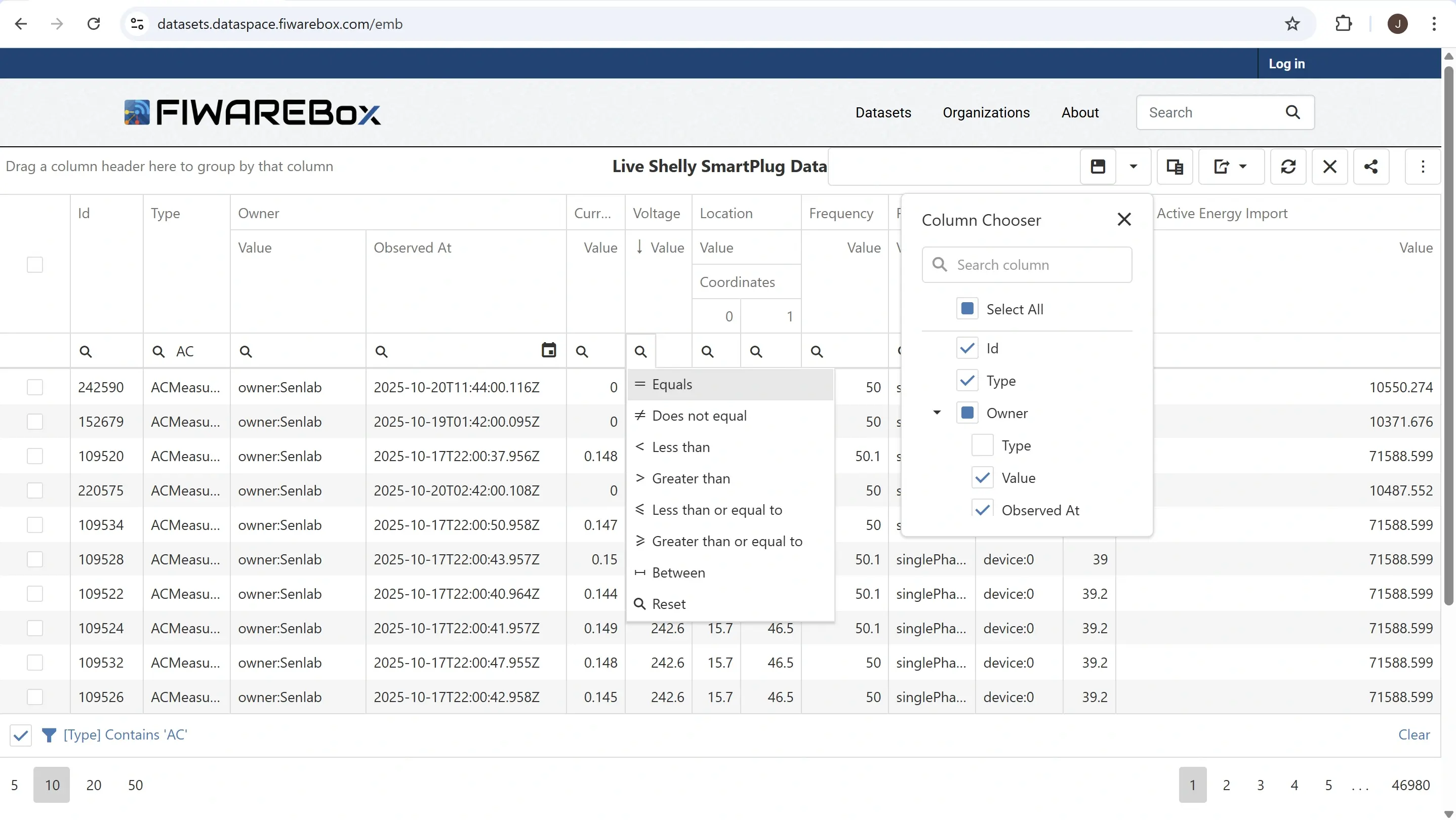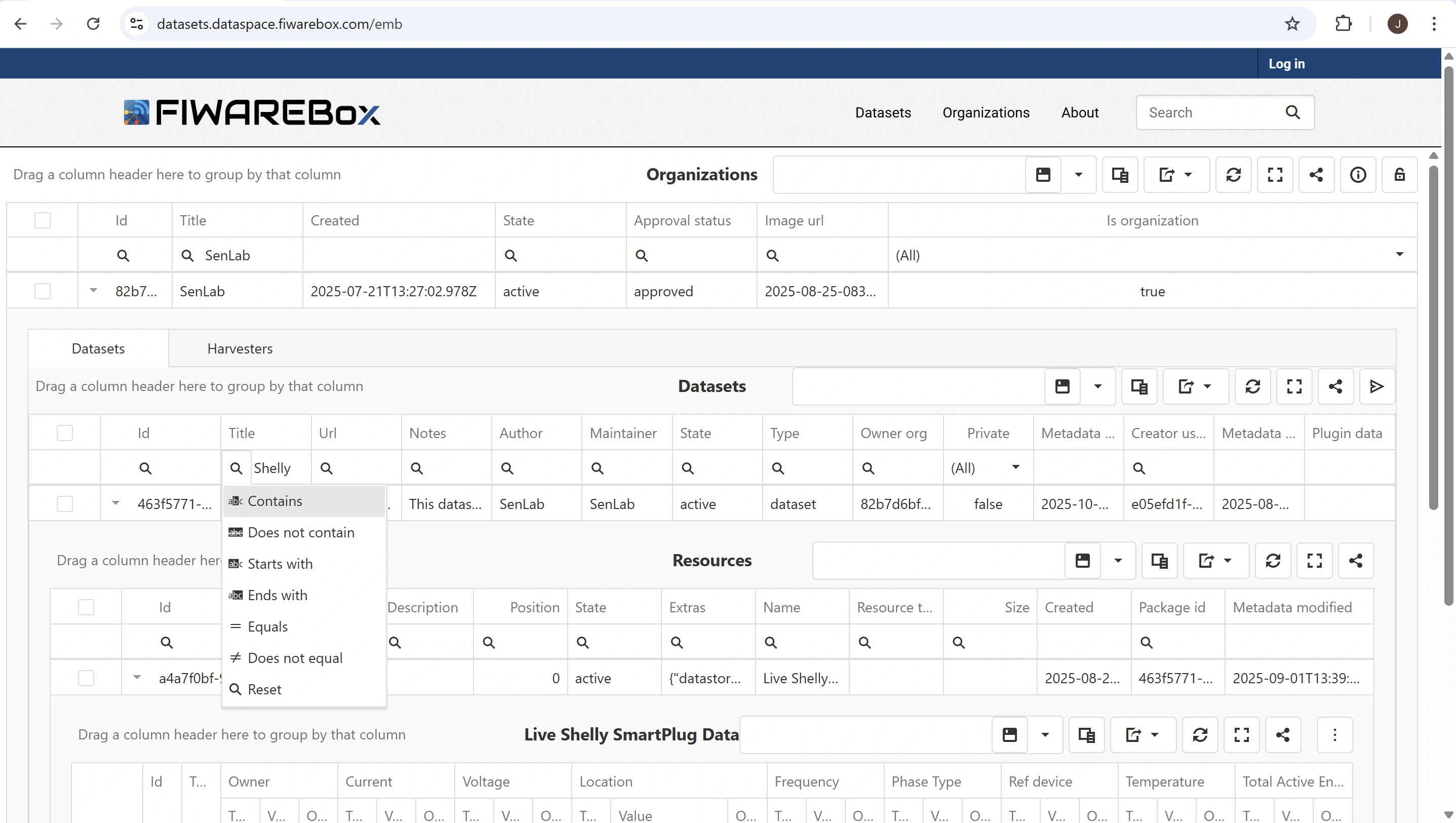BEYOND METADATA
In the last blog post, we introduced the Extended Metadata Browser (EMB) - a tool that finally lets you see your metadata.
But once users got that power, something funny happened: they wanted to see the data itself. Real data. Real columns. Real numbers. Without downloading ZIPs or CSVs.
Without switching to Grafana or Jupyter. And preferably… directly inside the browser.
So we built Extended Data Browser (EDB) — the next logical step in making CKAN-based Data Spaces actually usable.
WHY STANDARD CKAN PREVIEW FALLS SHORT
CKAN’s default “resource preview” is a nice demo — until you try to use it for anything serious. It’s slow, limited to a few thousand rows, and barely understands modern data structures like JSON.
In real-world Data Catalogs and Data Spaces, we need:
- Fast exploration of large tables.
- Consistent visualization of numeric and time-series data.
- Schema-aware formatting (units, datatypes, Smart Data Model hints).
- Permission-based access aligned with IAM policies.
- Support for live data sources (PostgreSQL, FIWARE context broker, APIs, MQTT...).
THE (LIMITED) CHARM OF CKAN’S CSV PREVIEW
It’s true — CKAN does include a built-in CSV preview that looks nice and even allows some basic filtering and sorting.
For small datasets, it’s convenient and surprisingly smooth. You can open a CSV resource, type in a filter, and instantly see the subset of data.
That’s great… but only until reality kicks in:
- It works only for CSVs - no JSON, or API-based resources.
- It fails for large files (above a few MBs or thousands of rows).
- It doesn’t understand data types, units, or metadata context.
- It doesn’t respect role-based access - the preview is either on or off.
- It can’t render live data sources or dynamic feeds.
In other words, it’s a static window - not a dynamic browser.
CKAN’s CSV preview is perfect for the “Hello world of open data”, but when you enter industrial-grade Data Spaces, it simply doesn’t scale.
So we decided to extend it. That’s exactly where EDB steps in.
INTRODUCING EXTENDED DATA BROWSER (EDB)
Extended Data Browser (EDB) is a smart data viewer for DCaaS and FIWARE-based Data Spaces.
Think of it as a bridge between metadata discovery (EMB) and data understanding (EDB).
While EMB tells you what’s available,
EDB shows you what’s inside.

We connected the Magic Wand with our new component - Extended Data Browser (EMB).
And then Magic happens:
The EDB directly connects to CKAN database. On top of that, we added a smart UI component - a DataGrid-based browser with before mentioned features and integrated it into our DCaaS and DSaaS.

Each user, tenant (or subdomain) can have its own configuration:
- Which data fields are visible.
- Which filters are available.
- How the View is filtered, sorted, grouped.
The result? Users can jump from “datasets tagged with FIWARE” to “datasets using Smart Data Model EnergyConsumption” in one click.
EMB, DCaaS, AND DSaaS - BETTER TOGETHER
Our Data Catalog-as-a-Service (DCaaS) and Data Space-as-a-Service (DSaaS) already provide CKAN-based dataset hosting, and DCAT-AP exposure.
With EMB integrated, they become a real data experience - not just a static portal.
- CKAN manages datasets.
- EMB and EDB let you explore them.
- FIWARE, context broker, and Smart Data Models provide interoperability.
- Together they form the foundation of a data catalog and data space.
When you click on Magic Wand, what you actually see is not one system — it’s a fusion of two: the Extended Metadata Browser (EMB) and the Extended Data Browser (EDB). They’re deeply connected, yet each has its own clear responsibility.
Think of the EMB as the catalog brain, and the EDB as the data body.
- The EMB holds everything about the metadata — descriptions, sources, publishers, formats, licenses, and lineage.
- The EDB deals with the data itself — tables, records.
Together, they form a Master–Detail View — a familiar and intuitive pattern where selecting an item (in the EMB) reveals the related content (in the EDB).
Here’s how it unfolds step by step:
- ORGANIZATION (EMB) — At the top level, you pick which organization or domain you’re exploring (for example, Washington State).
- DATASETS (EMB) — Under that organization, you see a list of datasets — each representing a thematic collection such as Water Consumption by Zone or Smart Meter Readings.
- RESOURCES AND HARVESTERS (EMB) — Inside a dataset, you find the resources (CSV files, APIs, streams) and information about how the data is harvested or updated (manual upload, CKAN harvester, FIWARE connector, etc.).
- DATA (EDB) — Once you click on a resource, the EDB takes over. It shows the actual data rows, allows filtering, sorting, visualization, and — depending on your permissions — editing, tagging, or exporting.
The key idea is that EMB provides context, and EDB provides content.
Without EMB, the data would be meaningless; without EDB, the metadata would be empty.
To keep things simple let's name the EMB/EDB combo Extended Browser (EB). Lets dive into SenLab company with Shelly SmartPlugin Data in JSON-LD format.

Extended Data Browser (EMB/EDB combo)
This layered approach lets you navigate huge datasets without losing orientation. You always know where the data came from (metadata) and what it contains (data). It’s also fully compatible with FIWARE Smart Data Models and NGSI-LD entities, meaning everything you see is structured, interoperable, and ready to flow into your applications or dashboards.
FUTURE STEPS
Are the same as for EMB - to make EB context-aware - understanding that “water quality” and “drinking water” might belong together.
We’re preparing to work on semantic expansion using NGSI-LD and ontology mapping, which would make browsing metadata even more intuitive.
(Yes, that means EB could one day guess what you mean before you finish typing. Scary? Maybe. Useful? Definitely.)
But before that, we need to add some visualizations, graphs, and dashboards.
THE PARETO PRINCIPLE APPLIED AGAIN
Like everything we build under FIWAREBox, EB follows the same rule:
INVEST 20%, GAIN 80%.
Instead of rebuilding CKAN’s core, we added a layer that immediately improves usability for all portals - national or local, public or private.
Sometimes the simplest improvement - “show me what’s inside” - delivers the biggest value.
DISAGREE, COMMENT, OR WISH TO KNOW MORE?

CKAN: EXTENDED METADATA BROWSER
